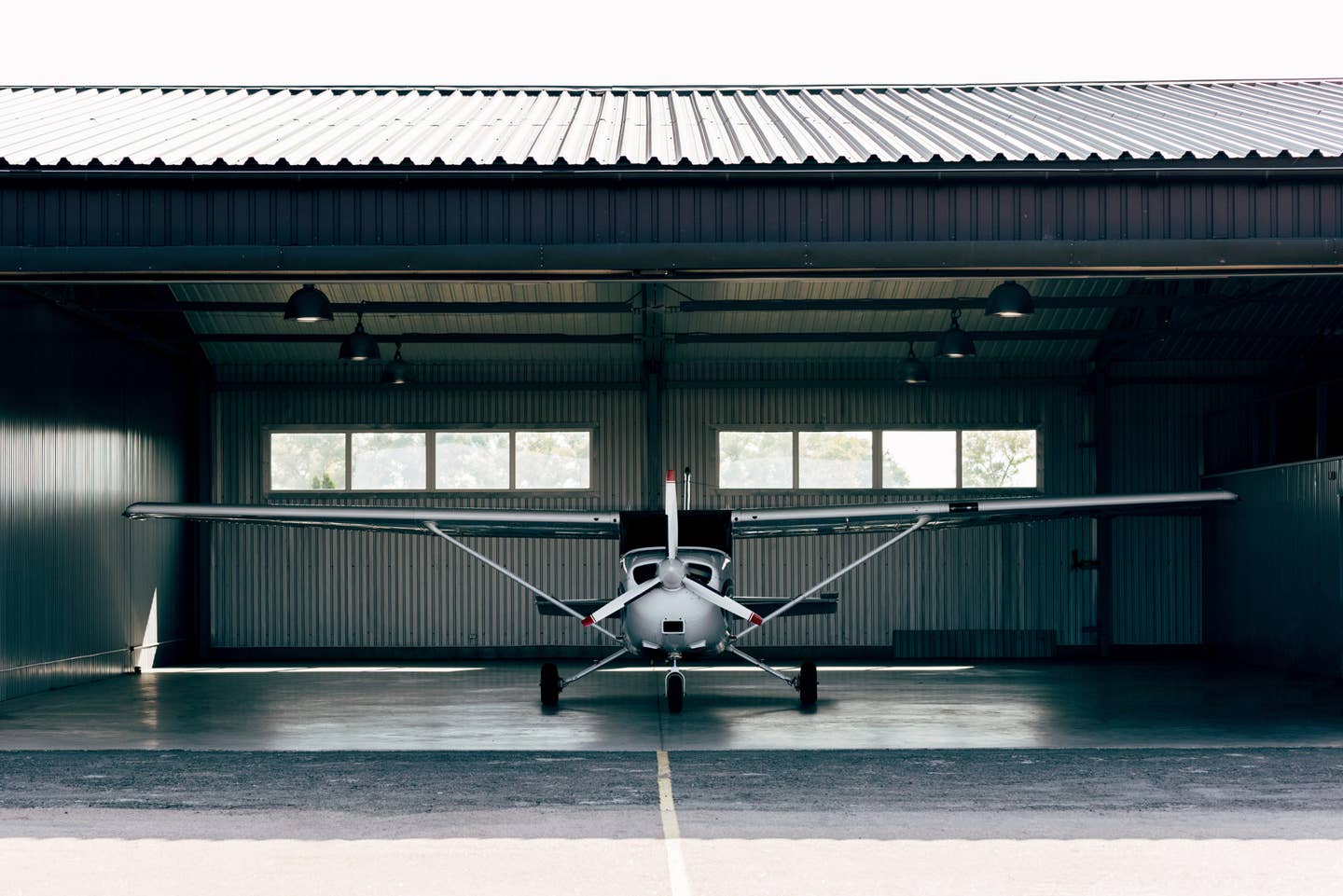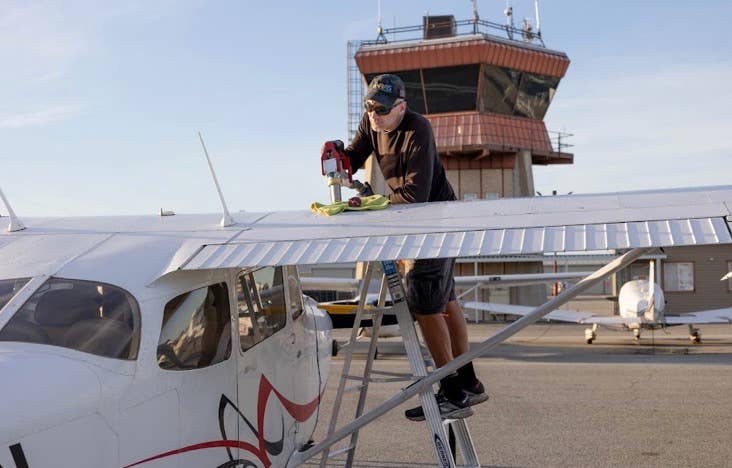Which Came First, The Hangar Or The Airplane?
You can argue yourself stupid about the high wing vs. low wing. Today’s blog will add absolutely nothing to the discussion. Because that’s not what it’s about.

small modern white airplane standing in hangar
The informal definition of “genius” is the ability to maintain two irrational thoughts without getting caught compromising sanity. Most pilots qualify at the Mensa level. Example: Many of us can barely afford owning an aircraft, let alone a building in which to house it, but the enterprising pilot can rationalize either, often both. This realization hit me when I banged my head into my airplane’s lift strut for the 10,000th time. The actual number is between 9500 and 11,000, and I apologize for being imprecise, but I only started tabulating 38 years ago when I suspected such encounters were unavoidable.
But are they? According to nonexistent NTSB analysis, wearing a ballcap while pre-flighting a high-wing airplane increases the odds of “klunking your noodle by 37 percent, as the brim inhibits upwardly forward visibility.” Wearing a ball cap backward, though, just makes you look stupid.
Cessna 172 owners are easily identified by the little diamond imprints on their foreheads from walking into the trailing edges of flaps or ailerons. This mostly applies to earlier 172 models before Cessna filled the cookie-cutter diamond holes with extruded aluminum bumpers. While this did not prevent pilots like me head-butting wings or struts, plus antennas, doorframes and pitot tubes, it mitigated the stigma of wearing the Cessna Diamonds on one’s forehead.
In the high-wing vs. low controversy, low-wing pilots might feel smug about avoiding the Mark of Cessna on their faces, but other threats abound. I have permanent butt damage from slipping off Bonanza wing-walks and once encountered an unexpected Cherokee hazard that scarred both flesh and soul.
It was a damp Tuesday morning, and while preflighting a Cherokee 180, I ran my hand along the wing’s leading edge, tactilely inspecting for dents and calcified bugs, when something hidden snagged. Got my attention, especially given the Tarantino flow of blood from two fingers sliced open as though I’d caressed a dull razor blade. I’d forgotten that the Cherokee’s stall warning actuator tab, about the size of a dull razor blade, protrudes from beneath the leading edge. Handle it gently, as you would a sleeping rattlesnake, and it’s harmless. Get careless, and it bites.
Which brings up how casual low-winger pilots might be when inspecting the airplane’s nether regions, especially when the ground is wet. Truthin’ time: Do low-wing Piper fliers always crawl beneath the wings to sample fuel or simply accept the blue stains on wheel pants as proof that a calibrated drip of 100LL is continually flushing away any impurities? A rhetorical question that requires no answer, but you know who you are, and what you do under the wing is your own business.
To you Mensa pilots who aced your own SATs, compare and contrast the habits of high-wing pilots vs. low. How many Cessna 172 pilots remove both caps to visually check fuel levels or to see if there are, indeed, any gas caps atop the wings? Without a stepladder, compliance might be shy of 100 percent. Even with airframe steps, or a willingness to scuff up struts and fuselage while scaling the heights, high-wing fuel caps are easily overlooked. Low-wing pilots, by contrast, simply pop their caps to stare into filler necks with the pride of a college freshman studying a beer bottle collection on what his parents naively envisioned would be a bookshelf. But what is the unknowable ratio of low-wingers sampling fuel tanks to high-wingers tasked with doing the same? I don’t know.
Initial flight training taught us to drain fuel from however many leaky ports the aircraft offers and to inspect the samples for contamination before tossing them on the weeds (yes, you recycle, and proud we are). I read somewhere that we could power the entire GA fleet for a month with the fuel samples discarded in a single day. I may have dreamt that, but the point is, we sample a lot of fuel and mostly deem it acceptable. While that result is desirable, there’s perverse satisfaction when spotting a tiny water bubble at the bottom of the collection jar. Or would it be floating on top? You may think you know the answer, but for scientific verification dribble some spit into your next sample and see where it goes. Likely down your chin, which makes your hangar neighbor wonder if you’ve been drinking avgas … again.
The pointless game of listing pros and cons of high-wing or low really comes down to whether you prefer shade or a place to spread out charts. In a future article I’ll explain what charts were. I’ve owned and instructed in both airframe types and have concluded that whatever gets me aloft and safely back, is fine. Wing configuration synergy results when the pilot who rationalized buying both an airplane and a hangar takes the inevitable leap of logic into securing yet another airplane, because we all need a second airplane while our first is down for maintenance. Of course, this could require a second hangar.
An alternate plan might be to embrace the Yin-Yang concept of complimentary dualism and purchase both high- and low-wing airplanes. Harmony triumphs as you retain the original hangar to save money and invoke your Tetris skills to fit the low wing of Yin beneath the high wing of Yang and thus maintain the rationalized balance of perceived logic that has long kept aviation from teetering into the pit of uncompromising reality.
There’s a fine safety wire between insanity and genius, so it might not be unreasonable for pilots to hesitate before inquiring on which side we’re expected to land. But whatever the choice, if history has taught us anything, it’s that I’ll still bump my head on that dang strut. Doesn’t take a genius to understand that some things can never change.
Editor’s note: Low wings are yang, high wings are yin. It’s reversed in the southern hemisphere.






